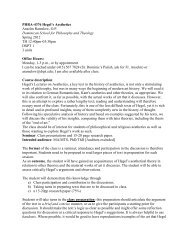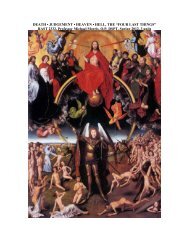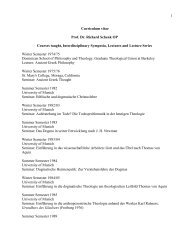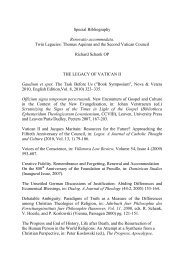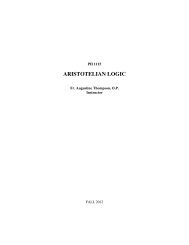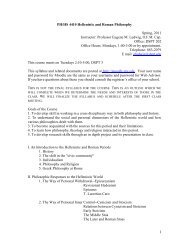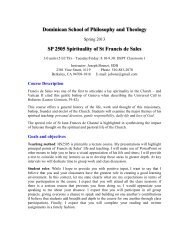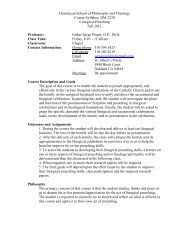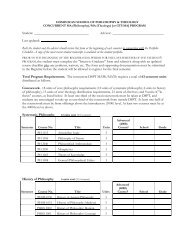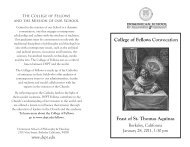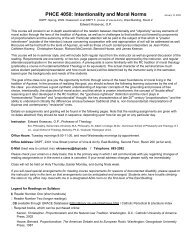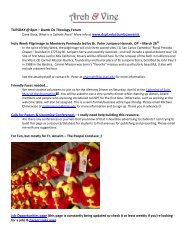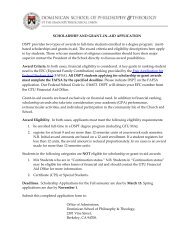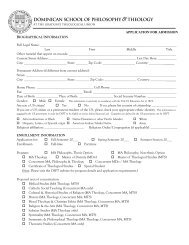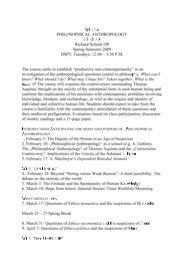READINGS for HS 4476 MEDIEVAL HERETICS AND INQUISITORS
READINGS for HS 4476 MEDIEVAL HERETICS AND INQUISITORS
READINGS for HS 4476 MEDIEVAL HERETICS AND INQUISITORS
You also want an ePaper? Increase the reach of your titles
YUMPU automatically turns print PDFs into web optimized ePapers that Google loves.
Otherwise it is generally true that the one who merely denies a fact need not prove it, as was<br />
said earlier, <strong>for</strong> there cannot be direct proof of a negative. One can indirectly prove a negative in this<br />
way: You can claim ten from me that you say I promised you. I deny that I promised. You prove by<br />
a document that the promise was made on such a day and in such a place. If I prove that on that day<br />
I was far outside the province, I have proven my negative indirectly, and your document is not<br />
accepted.<br />
3. Whom must the proof satisfy? Only the judge and not the accusing party.<br />
4. What must be proven? I answer: that which has been brought into court and on which the<br />
lawsuit depends either directly or by way of defense and rely. For if by witnesses or documents<br />
something else is proven than that which has been brought into court, or if witnesses are called to<br />
testify to one article only and they testify as to another, what they say to that article is not valid.<br />
5. When must proof be made? I answer, generally it must be made after the bringing of action<br />
as to each article which has been brought in to court and denied, and so that the accuser's claim is<br />
proven first and then the defense of the accused.<br />
6. There are six kinds of proof. Proof is made by the clearness of the facts, by repute, by<br />
presumption, by party oath, by witnesses and by documents.<br />
Proof by the clearness of the facts is made when, <strong>for</strong> example, a cleric is proven to be<br />
incontinent by the fact that he has a young son or that he has a woman of ill-repute in his house.<br />
Similar proof can be made from facts that are notorious. An atrocious injury can be proven by the<br />
observation of the damage to the integrity of the body.<br />
Proof can also be made from reputation.<br />
Proof can be made by presumption. When a person bribes the witnesses of his adversary, he<br />
is presumed to have brought a bad case. When a man and a woman are frequently found alone in a<br />
secret place it is presumed that they have committed <strong>for</strong>nication.<br />
Proof can also be made by an oath sworn by a party to a party or when the oath is allowed<br />
to a party by the judge because, <strong>for</strong> example, he has made a semi-plenary 2 proof already and the party<br />
oath takes the place of another proof.<br />
Proof can be made by witnesses and documents. We will discuss this matter fully in the next<br />
section. Note that these two ways of proof are more property called "proofs" than any of those just<br />
mentioned.<br />
Finally, note that a true proof prevails over a presumption.<br />
These kinds of proof have their place in the proof of facts. Proof of law is by statutes, canons,<br />
or customs . . .<br />
Tancred has spoken of semi-plenary proofs--a plenary proof would be those that he calls<br />
"more properly" proofs. There were only two of these, documents and eye-witnesses. Since proof<br />
from documents was rare in cases of heresy, we shall now examine what he says about witnesses.<br />
VI. Concerning Witnesses<br />
2 As opposed to a "plenary" or full proof. It normally takes two "full proofs" (eye witnesses<br />
or documents) to convict, as we shall see. Also, no number of semi-plenary proofs can add up to<br />
one full proof.



